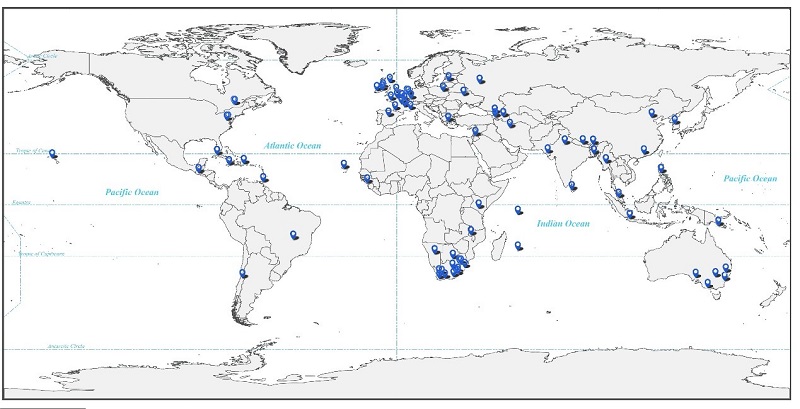The role of National Botanical Gardens to benefit sustainable development
On the occasion of the first anniversary of the establishment of the South China National Botanical Garden approved by the State Council, T《rends in Plant Science》published an article online titled "The role of National Botanical Gardens to benefit sustainable development". Prof Ren Hai of South China National Botanical Garden and Academician Stephen Blackmore of Botanic Gardens Conservation International are the coauthors. This article updates the concept of the National Botanical Garden, addressing the issues of ecosystem degradation and biodiversity loss in China. It proposes that the National Botanical Garden of China needs to enhance its innovation capabilities in seven areas to provide technological support for biodiversity conservation and sustainable development.
Modern botanical gardens originated in mid 16th Century Europe, initially focusing on medicinal plants, they have evolved to meet the changing needs of society. In the 18th century, they played a key role in spreading economically important plants around the world, and promoting the science of botany and use of economic plants. More recently, their skilled cultivation of plants in beautiful landscapes has served aesthetic purposes and provided health benefits to visitors through contact with nature. Consequently, the urban green space and public education roles of botanical gardens have developed rapidly. The national botanical garden concept stems from 18th century Europe colonial expansion and there are now about 80 national botanical gardens in 43 countries (Figure 1). Established and managed by the state, they research and conserve plant diversity, implementing international standards and strategies. Now they urgently need to rise to the challenges of tackling biodiversity loss, climate change, ecosystem degradation, and unsustainable development.
China's protected area system led by its National Parks, and the establishment of an ex situ conservation system of National Botanical Gardens, brings together two complementary systems. This system will not only address the United Nations Convention on Biological Diversity, the Paris Climate Agreement, the Decade of Ecosystem Restoration and the Sustainable Development Goals, it will also achieve China’s sustainable development by protecting biodiversity, providing plant resources and scientific and technological support for green development. This is necessary because China, like the rest of the world, faces ecosystem degradation and biodiversity loss made worse by the superimposed impact of global climate change. Meanwhile, the opportunities and solutions to these challenges offered by plants are insufficiently exploited.
To strengthen biodiversity conservation, China is enhancing its protected area system with national parks as the mainstay. At the same time, to combine in situ and ex situ conservation, the Chinese government has approved the construction of the National Botanical Garden in Beijing and the South China National Botanical Garden in Guangzhou in 2022. Next, China will comprehensively analyze its climatic zones, vegetation types, and biodiversity hotspots in relation to its existing botanical gardens, the status of regional sustainable development and the intensity of support from local governments before selecting and investing in 10-12 candidate national botanical gardens. This will ensure the highest standards of botanical gardens, in accordance with national representativeness, conservation effectiveness, social welfare and management feasibility. China’s national botanical gardens will be built in accordance with "the connotation of science, the appearance of art, the cultural heritage, international standards, and Chinese characteristics." By 2050, more than 50% of China’s native plants, more than 85% of the national key protected species and all 156 wild plant species with extremely small populations will be protected in situ within these gardens, and the corresponding scientific research, nature education, and resource utilization levels will be improved.
Over more than 500 years, the global community of botanical gardens has evolved, acquiring new roles and functions through time. Today the world faces enormous challenges with biodiversity loss, ecosystem degradation and global change driving the need for sustainable development. The Kunming Declaration, issued by COP15 in Kunming in 2021, calls for global action to curb biodiversity loss, improve human well-being and achieve sustainable development. The second phase of the conference in Montreal in 2022 adopted the Kunming- Montreal Global Biodiversity Framework with an ambitious global vision of "living in harmony with nature and recognizing, conserving, restoring and sustaining the use of biodiversity values" by 2050. In response, China proposes a comprehensive ex situ conservation system led by the National Botanical Gardens, to work with botanical gardens around the world in the cataloguing, assessment, ex situ conservation, public education and resource utilization of plant diversity to serve the foundation of an ecological civilization and achieve harmonious coexistence between man and nature.

Figure 1. Global distribution map of national botanical gardens
File Download: